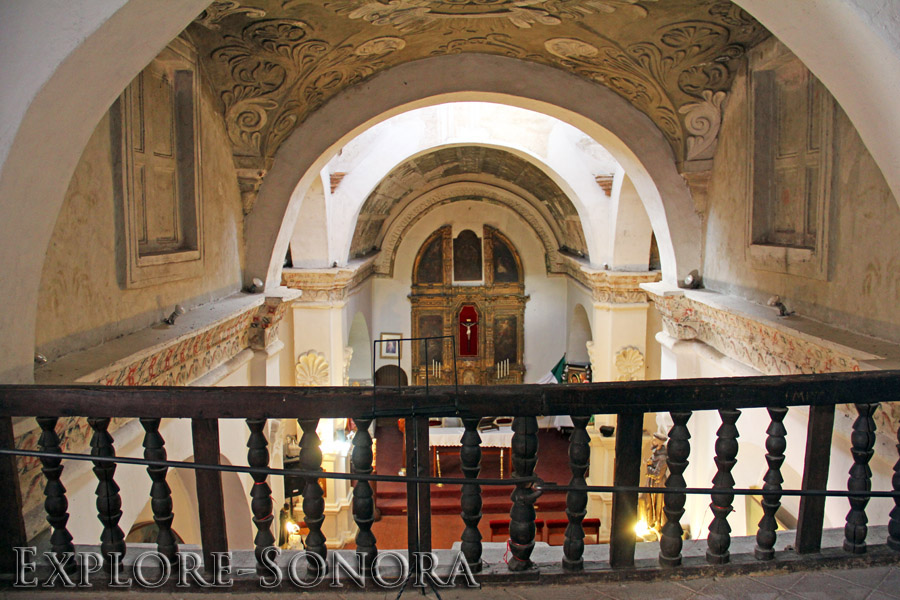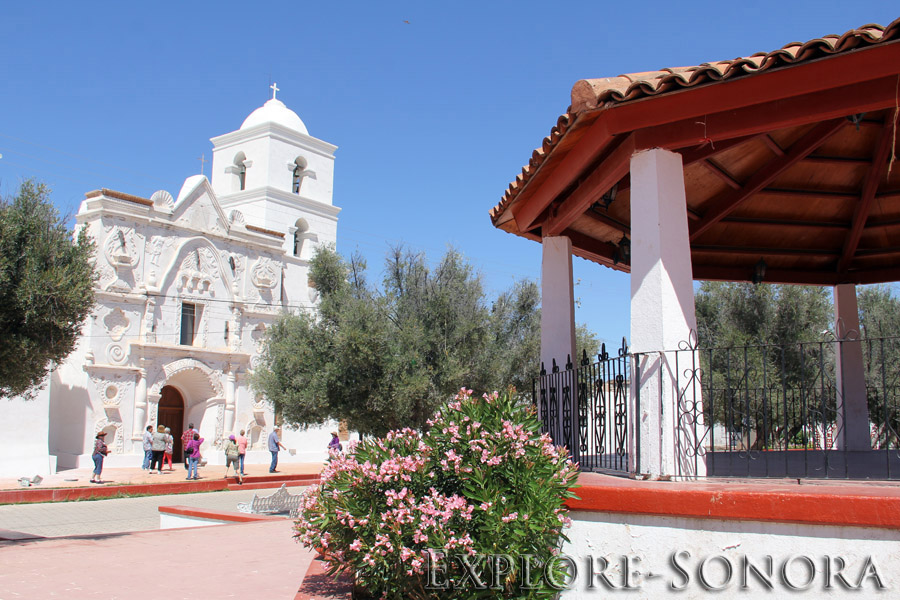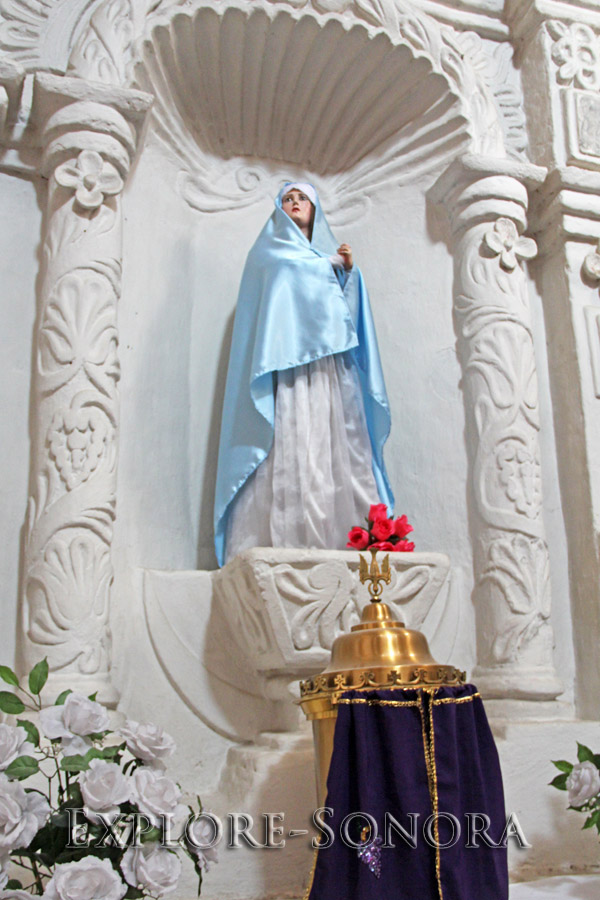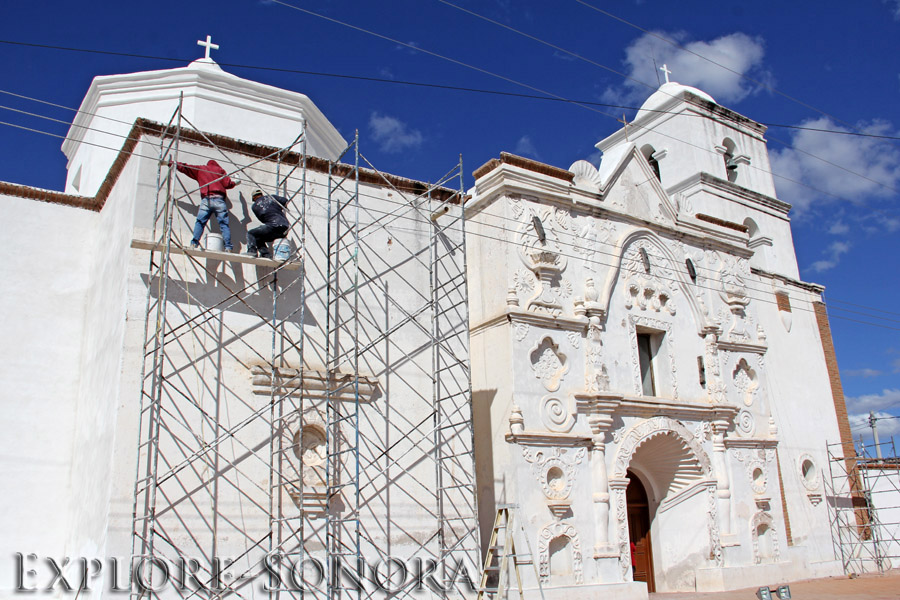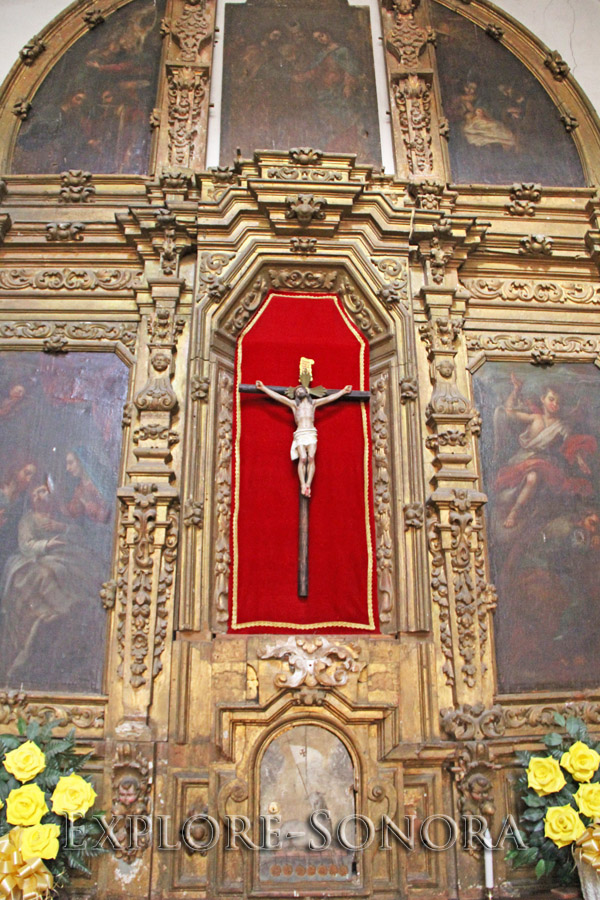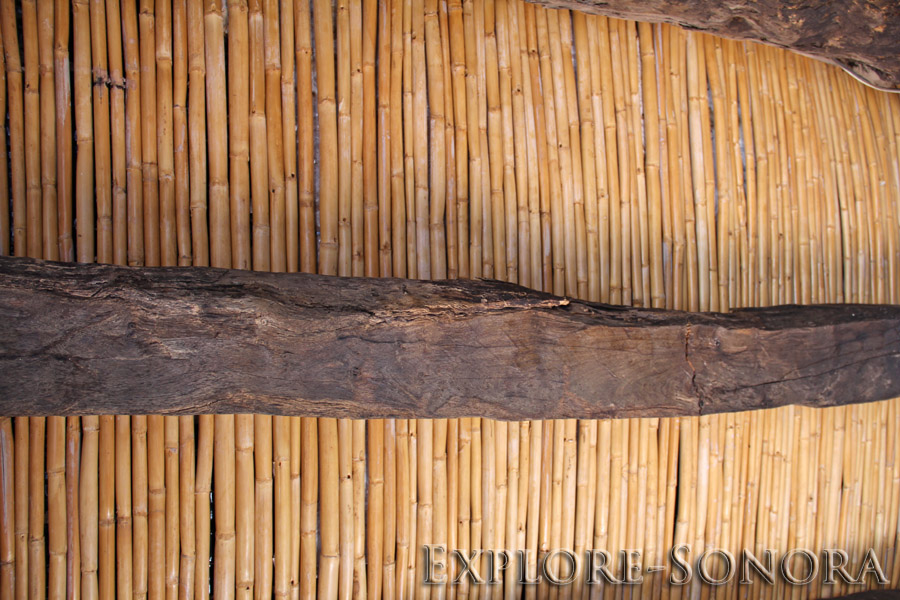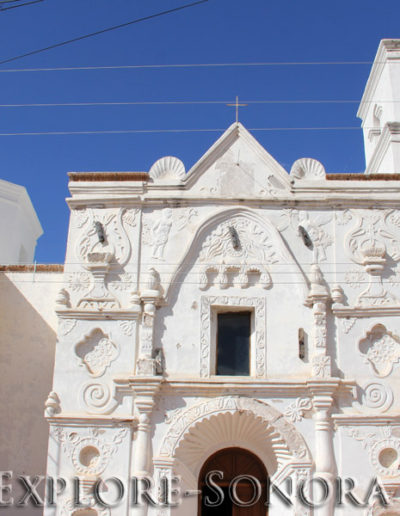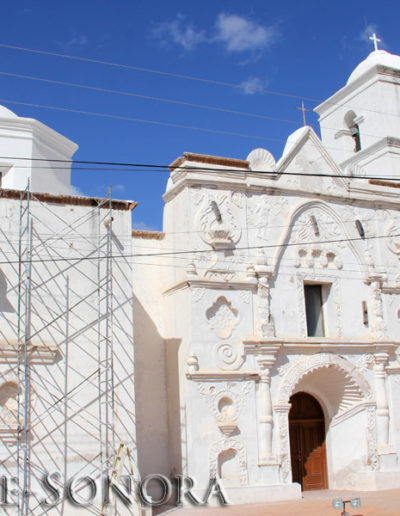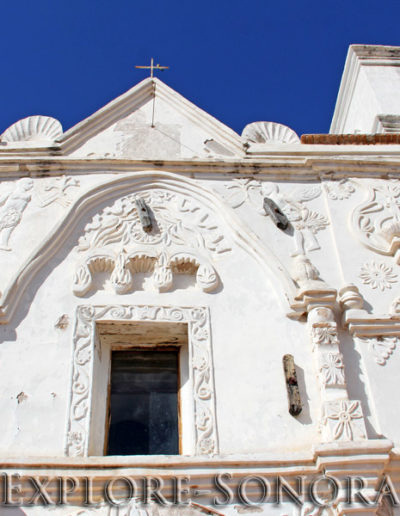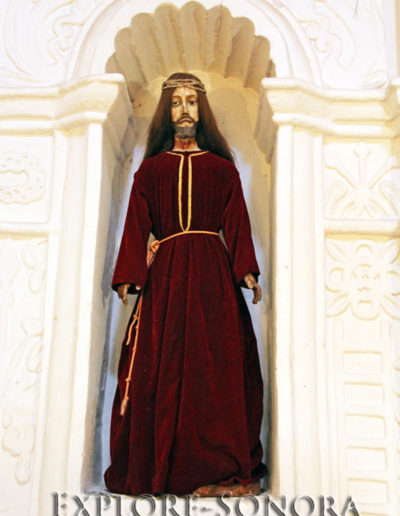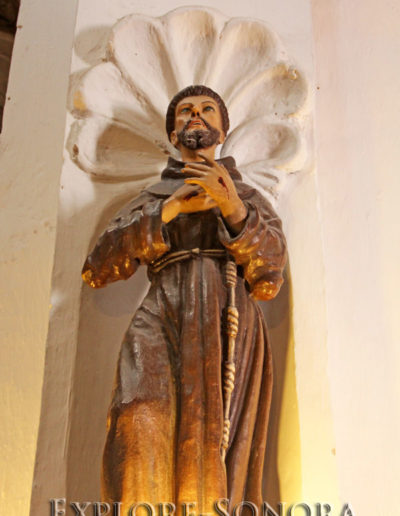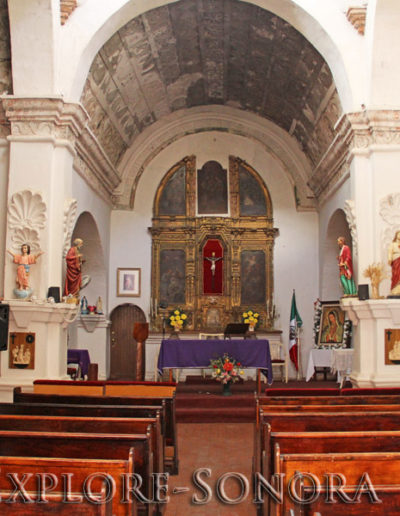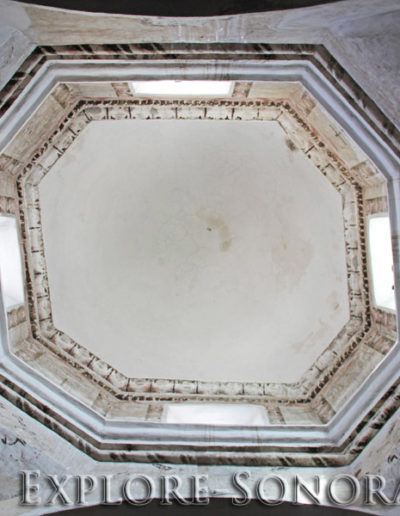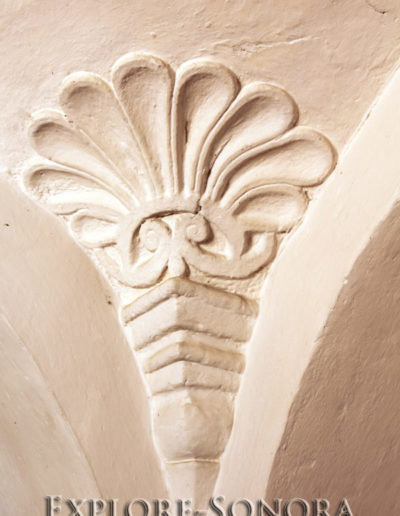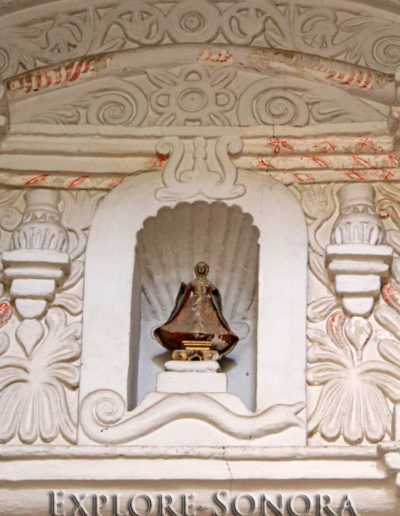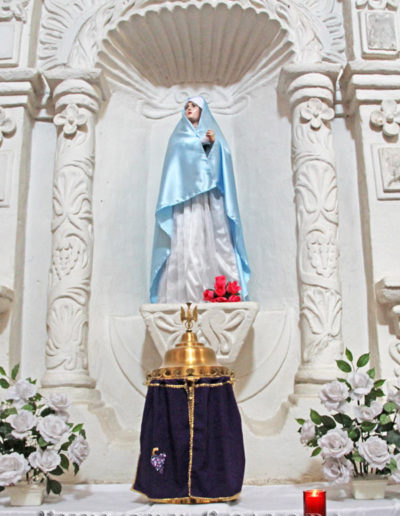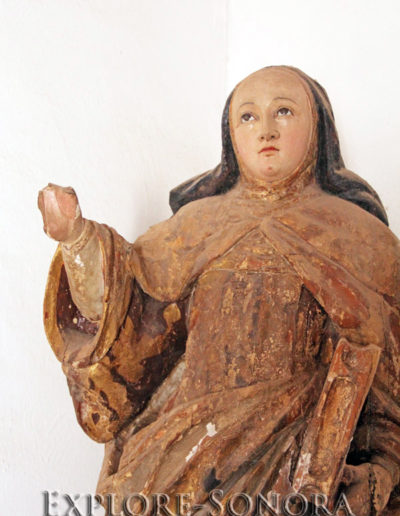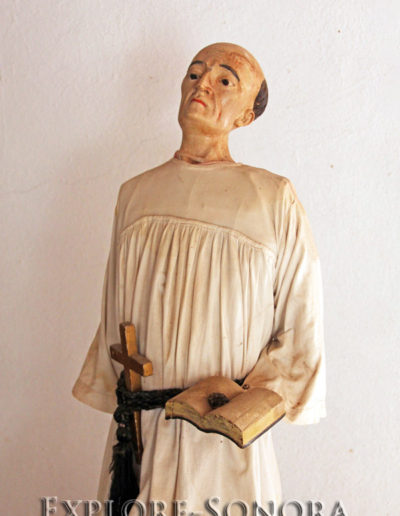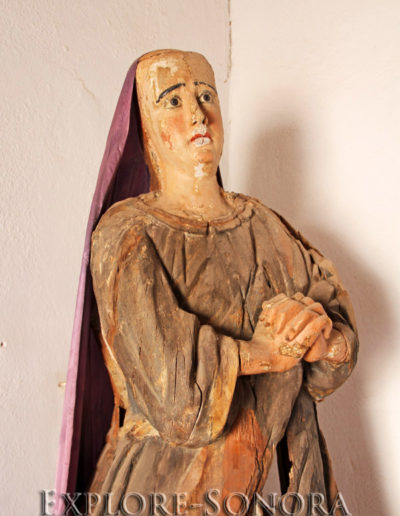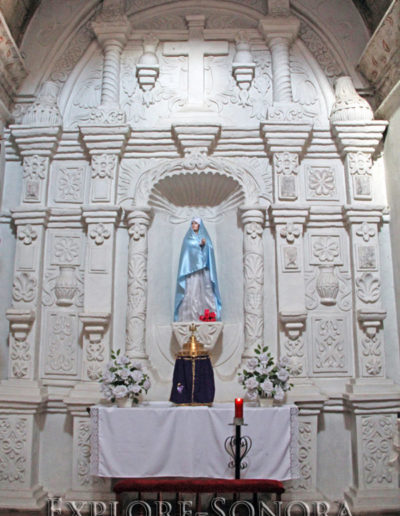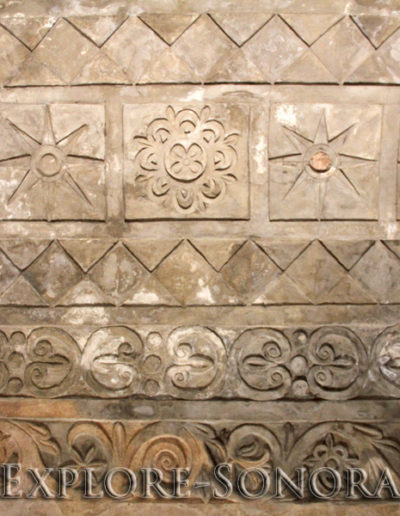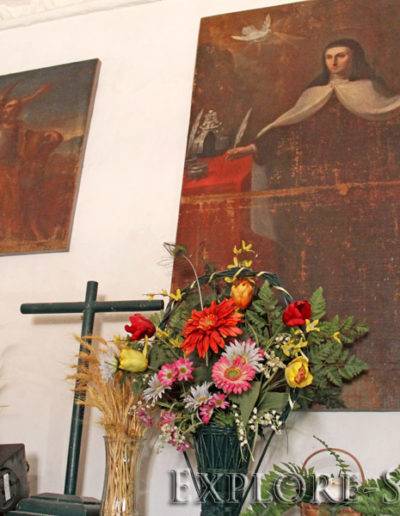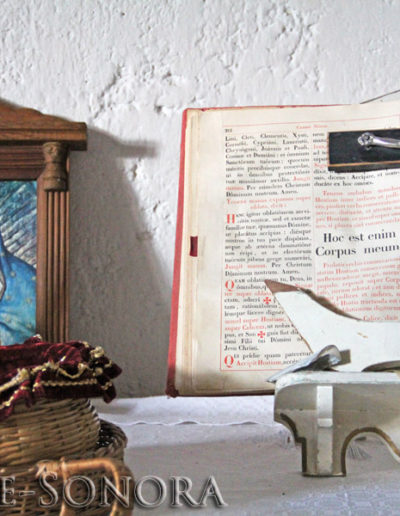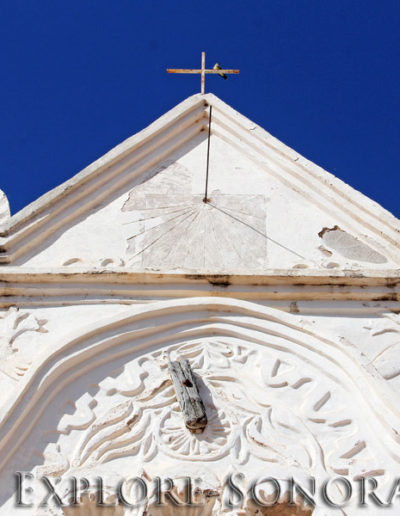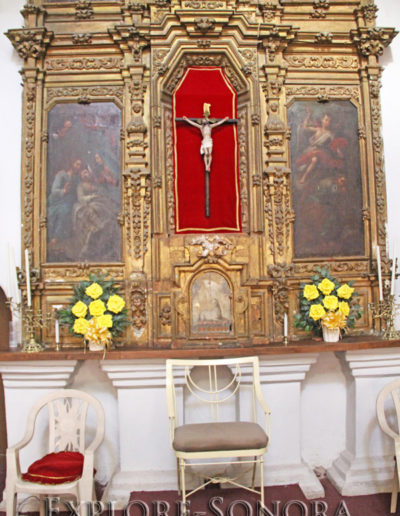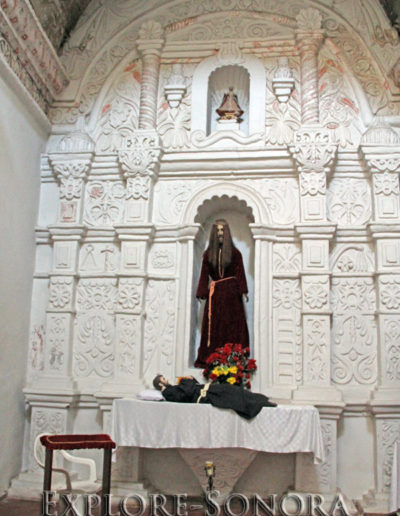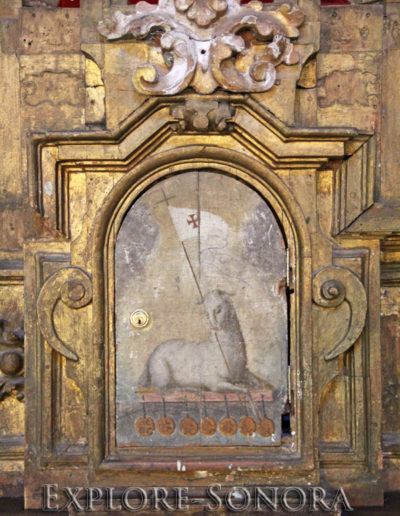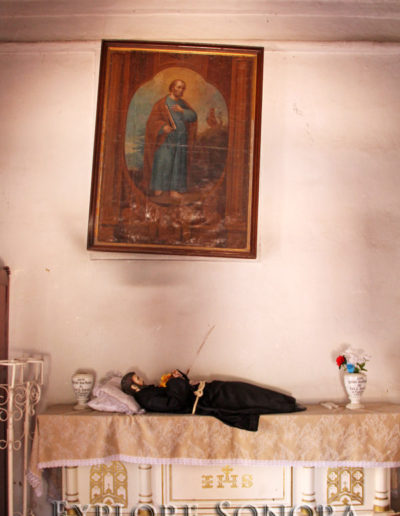Mission San Pedro y San Pablo del Tubutama
The mission of Saints Peter in Paul in Tubutama, Sonora was originally established by Italian Jesuit priest Father Eusebio Francisco Kino in 1691. The church had a rocky start, being built and destroyed five times, the first in the 1690’s and the last during the Pima Rebellion in 1751 (the church in Caborca was also destroyed during the rebellion).
But despite setbacks, the mission church still maintained its prominence through the Sonora missions era. It was the administrative headquarters for the missions of the Pimeria Alta region for many years during the Jesuit and Franciscan eras. Jesuit priests gathered there in 1767 after the King of Spain expelled them from Spanish territories. And it became the administrative headquarters for the Franciscans when they arrived in 1768.
The Franciscans built the current church during a period from the 1770’s to the end of that century, during a time of frequent Apache raids, in one of which priest Fray Felipe Guillén was killed in 1778.
It is a marvelous example of period architecture with some unique characteristics that make it a must-see on Kino missions tours.
The footprint of the Iglesia de San Pedro y San Pablo is shaped like a cross, but instead of having an entrance at the base of the cross, the arched entrance is on one side, facing the plaza. This is because at the time of its construction, the pueblo of Tubutama was structurally arranged to provide a defense against Indian raids for the eight families who lived there.
All of the homes were situated in a closed formation around the plaza, and their entrances, like that of the church, opened on the plaza side so the pueblo could be closed in a fortified position.
The building’s exterior façade features a vertically-mounted sun dial that is flanked by two large scallop shells, a symbol that represents Saint Santiago, the patron saint of Spain. Shells are symbols that are commonly used in Sonoran missions and also symbolize pilgrimage.
Below and on either side of the sun dial are two angels, both carrying a rooster. Roosters are a common symbol used to represent Saint Peter, with the significance of his three denials of Christ before the first rooster’s crow in the morning.
Inside the church, simple wood pews still seat parishioners for church services, and a balcony is located at the back of the sanctuary. It has been undergoing a steady, detailed renovation for years, so many of the restored areas have yet to be re-painted.
In front of the church, an arched ceiling over the altar area is filled with bas-relief symbols in plaster. The wall behind the altar is a structure of woodcarvings that date back to the late 1700’s with five inlaid oil paintings depicting scenes in the life of San José, Saint Joseph.
The ceiling in front of the altar area features a domed copula. On both sides of the copula are the two transcepts that form the cross-sections of the cross.
The transept on the left side of the altar features a figure of San Francisco Javier, a statue of the Passion of Christ and higher up a smaller figure of Our Lady of San Juan de los Lagos. The wall is adorned with bas-relief designs formed in plaster.
The opposite transcept features a figure of the Virgin Mary as the Basque saint Our Lady of Aránzazu, and a brass baptismal font with a decorative dove handle. Its wall is also decorated with three-dimensional plaster designs.
There are also some interesting religious figures in the sanctuary, like the life-sized figure of Christ on the cross, Santa Eduviges carrying a basket of bread, a statue of Saint Francis of Assisi and a purple-frocked Santa Dolores, Our Lady of Sorrows.
The church has an adjoining museum with church relics like centuries-old woodcarvings of saints and historic, decorative priestly vestments. But the museum is only open on request, so you will need to either be on an organized tour or ask around to find the home of the very friendly woman who has the keys.
Although Tubutama had serious problems with cartel violence in 2010 that stopped tourism in its tracks, the town and area around it have been stable in the past few years and tourism has returned to the area. And if that ever changes, we will let you know.

